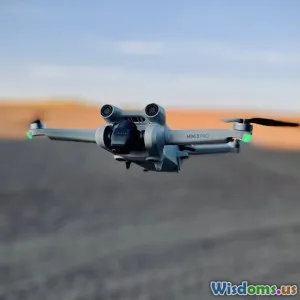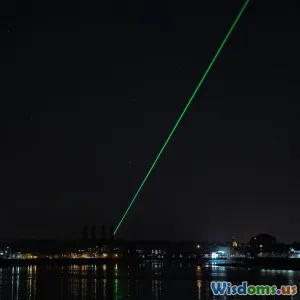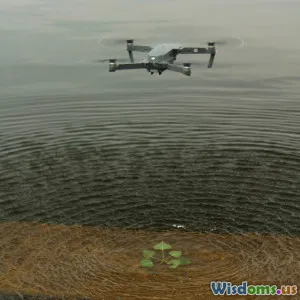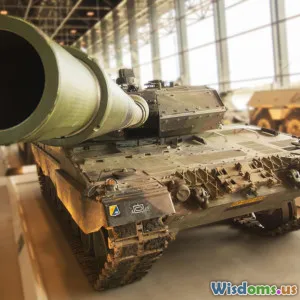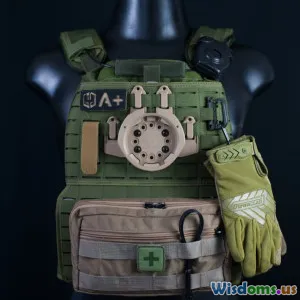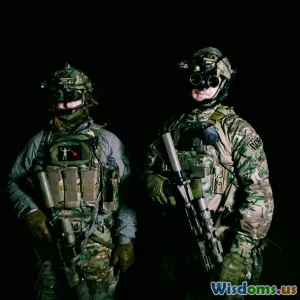
Demystifying Spectrum Warfare Tools for New Military Recruits
15 min read Explore how spectrum warfare tools shape modern military operations, empowering new recruits to master electronic battles in today's complex combat environments. (0 Reviews)
Demystifying Spectrum Warfare Tools for New Military Recruits
Introduction: The Invisible Battlefield
Imagine standing at the edge of a battlefield, not with guns blazing or bombs detonating, but with invisible waves infiltrating, cloaking, and defending. This is the frontier of spectrum warfare—where the fight isn’t always seen but is constantly felt. In today’s high-tech conflicts, the tools that control the electromagnetic spectrum (EMS) can mean victory or defeat. For new military recruits, understanding these tools is as fundamental as learning to wield a rifle or operate a drone. But what exactly are spectrum warfare tools? How do they work, and why are they so crucial for twenty-first-century defense?
This article pulls back the curtain, breaking down complex concepts, grounding each one in real-world relevance, and equipping new recruits with the knowledge to navigate and dominate this unseen but vital domain.
The Electromagnetic Spectrum: The Foundation of Modern Combat
What Is the Electromagnetic Spectrum?
At its core, the electromagnetic spectrum (EMS) consists of all the frequencies of electromagnetic waves, ranging from very low-frequency radio waves up through microwaves, infrared, visible light, ultraviolet, X-rays, and even gamma rays. Every time a radio transmits, a cell phone pings a tower, or a radar scans the sky, it operates within this spectrum. Modern militaries rely heavily on the EMS for communication, navigation, surveillance, and targeting.
Fact: According to the US Army Training and Doctrine Command, over 90% of military capabilities are dependent on access to the electromagnetic spectrum in some way.
Why Is the Spectrum a Battlespace?
The simple reason: control. If one side can jam another’s ability to communicate, navigate, or detect enemies, it gains a crucial tactical and strategic advantage. Spectrum control can:
- Conceal troop maneuvers
- Disrupt enemy coordination
- Safeguard friendly operations
- Enable precision targeting
As a result, nations have invested billions in technical means to wrestle control of the EMS from rivals. Spectrum warfare, sometimes referred to as electronic warfare (EW), sits at the heart of this struggle.
Categories of Spectrum Warfare Tools
Modern spectrum warfare involves a suite of diverse technologies and tools. Each fulfills specific roles: detecting signals, hiding communications, jamming enemy transmissions, or deceiving sensors. Let’s navigate the key categories new recruits need to know.
1. Electronic Support (ES) Tools: Understanding the Environment
Purpose: ES tools, also known as electronic support measures (ESM), gather intelligence about the spectrum environment. They detect, intercept, identify, and locate sources of electromagnetic energy—often the first step to dominate the spectrum.
Examples:
- Wideband Receivers: Devices like Thales' Sotas or L3Harris’ VAMPIRE system scan large portions of the spectrum for hostile signals.
- Direction Finders (DF): Systems such as the AN/PRD-13 (used by the US Army) pinpoint the location of enemy transmitters.
- Signal Analysis Suites: Tools like Keysight Technologies’ Signal Studio quickly characterize unknown signals, helping identify transmission types or enemy systems.
Real-World Insight: During the 1991 Gulf War, coalition forces used ESM to detect enemy radar and communication signals, thus enabling timely airstrikes and suppressing Iraqi air defenses.
2. Electronic Attack (EA) Tools: Disrupting and Denying
Purpose: EA tools actively degrade or destroy enemy use of the EMS by jamming, spoofing, or even physically disabling equipment.
Key Approaches:
- Jamming: Overloads specific frequencies to prevent communication (e.g., Russia’s Krasukha-4 jams radar signals).
- Spoofing: Mimics legitimate signals to mislead enemy systems. For instance, Iran reportedly used GPS spoofing to divert a US RQ-170 drone in 2011.
- High-Powered Microwave (HPM) Weapons: Devices like the US Air Force’s CHAMP missile can disable electronics via targeted microwave bursts.
Quote:
“Jamming or spoofing can cripple adversary operations without a single shot fired, turning the spectrum itself into the weapon.” — Dr. James E. Butler, Defense Electronics Analyst
3. Electronic Protection (EP) Tools: Shielding Friendly Forces
Purpose: EP encompasses measures that safeguard military forces and assets from enemy spectrum attacks.
Techniques:
- Frequency Hopping: Radios constantly change frequencies to avoid jamming. The US Joint Tactical Radio System (JTRS) employs this.
- Signal Encryption: Difficult or impossible to decipher if intercepted, exemplified by the US Army’s SINCGARS (Single Channel Ground and Airborne Radio System).
- Adaptive Filtering: Removes interference from enemy jamming.
Case Study: NATO pilots flying in contested airspace use Link-16 communications, which incorporate strong anti-jam and encryption technologies, to ensure connectivity amidst hostile EW attacks.
Inside Modern Spectrum Warfare: Real-World Deployments
A Glimpse into Recent Conflicts
Ukraine and Russian Hostilities (2022-present):
Russian and Ukrainian forces have used spectrum warfare intensively, with real consequences:
- Russia’s Leer-3 and Murmansk-BN systems jammed Ukrainian drone communications, impeding reconnaissance and attacks.
- Ukraine responded by diversifying communication channels, leveraging commercial Starlink terminals, but even these have faced targeted jamming and cyber attacks.
- Volunteers and reservists rapidly trained on spectrum protection countermeasures, underscoring the everyday relevance for all recruits.
Syria:
- US troops encountered sophisticated Russian GPS spoofing, affecting everything from navigation to the targeting of munitions.
Fact: A 2022 RAND Corporation report notes spectrum denial was responsible for over 60% of battlefield equipment loss in some locales during the initial months of the Ukraine conflict.
Civil and Commercial Crossovers
Civilian tech increasingly blurs with military spectrum warfare:
- Tools like software-defined radios (SDRs)—used by hobbyists—are retrofitted for ESM and jamming by paramilitary groups.
- Commercial drones, when repurposed, require advanced spectrum monitoring to prevent their control signals from being intercepted or jammed.
Space Speaks the Spectrum
Modern operations frequently involve satellites—another spectrum domain:
- China’s Tiangong satellites and the US’s NROL reconnaissance birds both support strategic EW operations, monitoring signals globally.
- SpaceX’s Starlink, deployed over Ukraine, revealed the vulnerabilities—prompting rapid development of more robust spectrum defense techniques.
The Recruit’s Toolkit: Essential Spectrum Warfare Tools Explained
Personal Gear — Ground Level Tools
-
Manpack Jammers:
- Lightweight enough for infantry, devices like the Russian RP-377 or US Counter-RCIED (radio-controlled improvised explosive device) systems disrupt specific frequencies used for remote-triggered bombs.
-
Spectrum Analyzers:
- Portable analyzers display which frequencies are active, helping troops detect or avoid threats such as surveillance drones or eavesdropping tech.
-
Tactical Communications Systems:
- Secure radios with anti-jam features, encryption, and frequency agility—like Harris AN/PRC-152.
Vehicle- and Airborne Platforms
-
Integrated EW Suites:
- Armored vehicles like the US Army’s MRAP (Mine-Resistant Ambush Protected) or Bradley IFV mount modular EW packages to protect convoys from IEDs, communications surveillance, and radar.
-
Airborne EW Assets:
- The EA-18G Growler operates with powerful radar jammers and ESM systems, escorting strike packages and suppressing enemy air defenses.
-
Unmanned Systems:
- Drones equipped with jamming pods can disrupt enemy radar and radio within a theater of operations—from Turkish Bayraktar TB2 to the US MQ-9 Reaper.
Base and Strategic Level Solutions
-
Fixed Installations:
- Strategic EW centers maintain vast arrays of antennas, servers, and analyzers, building an around-the-clock picture of the spectral battlespace.
-
Mobile EW Vehicles:
- Platforms like the German “HUMMEL” vehicle or US MRC-191 integrate sensors and jammers for rapid deployment to contested areas.
-
Cyber-EW Convergence:
- Increasingly, spectrum warfare overlaps with cyber defense. Artificial intelligence helps classify unknown signals, defend against spoofing, and automate jamming, making tech-savviness a must for recruits.
Learning and Adaptation: The Recruit’s Approach
Simulation and Training
Gone are the days when electronics knowledge was nice-to-have. Military training centers now emphasize spectrum warfare from day one:
- Simulation Suites: Software from companies like CAE and Cubic Corporation simulates real-world jamming, spoofing, and interception scenarios.
- Live Exercises: Red Flag EW missions at Nellis Air Force Base give recruits hands-on experience in contested spectrum conditions, using everything from handheld analyzers to advanced aircraft systems.
Expert Tip:
“Practicing with simulated jamming or deceptive signals builds critical resilience and keeps troops agile in dynamic threat environments.” — Colonel Ava Jenkins (U.S. Army Cyber Command)
From Tech-Savvy to Tech-Leader
Spectrum warfare rewards analytical thinking and adaptability. Recruits with backgrounds in STEM, electronics, and programming often excel, but all can learn the basics:
- Stay curious: Regularly review open-source bulletins or military periodicals on EW trends.
- Practice with gear: Testing comms equipment for interference can reveal vulnerabilities and build confidence.
- Engage in mentorship: Learning from experienced EW officers accelerates operational competence.
Ethics and Law: Spectral Operations Boundaries
Just as with other combat domains, spectrum warfare is governed by treaties, rules of engagement, and ethical considerations:
- Civil aviation, emergency response, and commercial channels are protected in conflict zones.
- Intentional jamming during peacetime risks legal repercussions and can endanger civilian lives.
Case in Point: The International Telecommunication Union (ITU) and Geneva Conventions outline what is permissible, reinforcing that military spectrum operations must always balance mission goals with humane and lawful behavior.
The Road Ahead: Emerging Trends and What Recruits Can Expect
Artificial Intelligence and Automation
Next-generation spectrum warfare tools embrace AI:
- Machine-learning algorithms spot enemy transmissions faster than ever, automatically flagging or jamming compromised frequencies.
- Deep learning is used to predict and counter new types of electronic threats in real-time.
- Innovations like the U.S. Defense Advanced Research Projects Agency (DARPA)’s Adaptive Radar Countermeasures program exemplify how AI refines jamming effectiveness dynamically.
Miniaturization and Mobility
Tomorrow’s EW tools will be smaller, lighter, and more portable. Single soldiers may soon carry self-contained spectrum surveillance “pods” or wearable sensors.
- For example, Israeli and American troops have tested wristwatch-sized spectrum sensors in training, instantly alerting to unexpected emissions nearby.
Resilience Against Hybrid Threats
Modern hostility often blurs the lines between state and non-state actors. Terrorist groups and rogue states increasingly acquire EW expertise, demanding vigilance and preparedness from all.
Training Culture Shifts
As spectrum warfare becomes central to every unit’s survival and victory, basic training now integrates EMS basics for all, not just signal specialists. Field manuals emphasize:* "Expect the unexpected—an adversary may strike not with fire, but with a frequency."*
Conclusion: Embracing the Invisible Edge
For new military recruits, spectrum warfare tools are more than mere technical gear—they are enablers of mission success, lifesavers, and strategic assets. Mastery of these tools isn’t restricted to electronic warfare officers; it is becoming a universal skill, essential for every warfighter on tomorrow’s battlefield. As technology evolves and adversaries adapt, those who can understand, operate, and improvise within the electromagnetic spectrum will help write the next chapters in military history.
Action Point: Every recruit can begin by studying their field equipment, participating actively in EMS simulations, and staying abreast of emerging trends. In spectrum warfare, knowledge is as critical as action. Embrace the invisible, and you may tip the scales, unseen but unstoppable.
Rate the Post
User Reviews
Popular Posts












